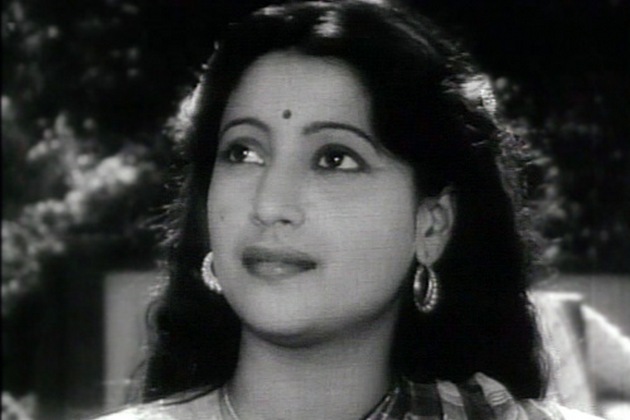Yes, the Garbo analogy is the easiest to draw from. It is the only easily available reference point to understand Suchitra Sen. The fact is we will never really know what made her withdraw from the public life that had created layers of myth, mystery and cinematic lore around her. She had had enough perhaps. She had seen it all and perhaps seen through it all. The fame, its tendency to indulge in the falsification and iconification of mortality into something ethereal, timeless even though actors, even as famous as Suchitra Sen are flesh and blood beings with hollows and aches and fears and limits of endurance.
**
What makes us think that we only fail artists when we don’t love them enough? Maybe we fail them when we love them too much, expect too much from them and deny them the right to be real, to be detached from what we want them to be.
**
Like a comic talent who may not be a happy person but is asked to crack jokes at every gathering or a singer who must sing whereever she goes, those who loved Suchitra Sen expected her to be Suchitra Sen, the legend always. The woman who defined female superstardom on her own terms, who informed her performances with a sense of power and individuality and intelligence that you forgot the gender of her characters and were just drawn to their substance, their core.
And that utterly instinctive and elemental chemistry with Uttam Kumar? She never lived it down, did she? Yes, it is nothing short of miraculous, what they created when they faced the camera and each other and answered each gesture with a gesture as if they were completing each others sentences and even their silences and pauses. It is once-in-a-life-time thing, this understanding that makes two actors behave like one unit but there was more to her.
**
For Hindi film viewers, she was the definitive Paro and walked the line between total surrender and uncompromised dignity with a grace we never saw again. She had the kind of a presence that could never be dismissed as incidental to a plot. She was an equal always even in sketchy roles. Someone whose femininity had an edge that could not be messed around with. And that face. Few heroines in her era and after have had a face that just needs the camera to light up like a lantern full of moonlight. Her eyes saw the world and people and beyond. They were playful and seductive and sad and ‘virakt’ and confessional and reclusive. That was in the end the ultimate quality of her performances and her life. Her ability to engage with all of it and disengage with all of it.
**
That is what made her performance in Gulzar’s Aandhi so compelling. The need for fulfilment and relationships. The urge to play wife and mother and yet the purposeful and for the want of a better word, masculine stride that takes her right into the heart of dehumanising politics where not one genuine emotion can be shared. The rasas of moh and virakti always flowed together through her work. In Mamta (the remake of Uttar Falguni (1963)), she was both the sacrificial mother and the rebellious daughter. The woman who wants to love quietly and the girl who is told, “In baharon mein akele na phiro.” In Bambai Ka Babu, she is the naughty sister who discovers the man she thinks is her sibling is infact a stranger on the verge of falling in love with her. Her sunshine disappears and there she is, trying to be moral and human at the same time.
**
She was a female superstar at a time when women did not exude power. She had the courage of conviction to turn down big directors, including Raj Kapoor and even Satyajit Ray, or so says film lore. And this despite a marriage and motherhood. There was also (in 1963) the landmark moment when she became the first Indian actress to win an international award, the Silver Prize for Best Actress at the Moscow Film Festival for Saptapadi.
**








 with
with
Great article.